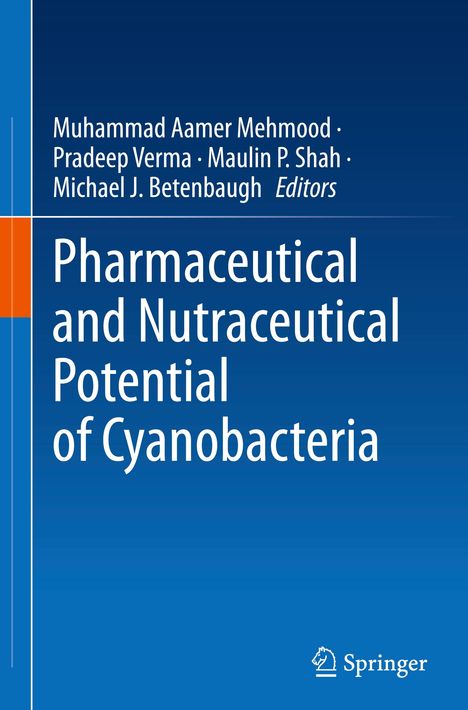Pharmaceutical and Nutraceutical Potential of Cyanobacteria
Pharmaceutical and Nutraceutical Potential of Cyanobacteria
Buch
- Herausgeber: Muhammad Aamer Mehmood, Michael J. Betenbaugh, Maulin P. Shah, Pradeep Verma
- Springer Nature Switzerland, 03/2024
- Einband: Gebunden, HC runder Rücken kaschiert
- Sprache: Englisch
- ISBN-13: 9783031455223
- Artikelnummer: 11807684
- Umfang: 372 Seiten
- Nummer der Auflage: 2024
- Auflage: 2024
- Gewicht: 723 g
- Maße: 241 x 160 mm
- Stärke: 26 mm
- Erscheinungstermin: 23.3.2024
Achtung: Artikel ist nicht in deutscher Sprache!
Klappentext
Cyanobacteria are the extraordinary microbes that are believed to have started life on Earth. It's been billions of years since they colonized this planet. Now, the question arises, what has made them so successful? The answer to this question lies in their remarkable potential to survive unfavorable environments, their substantial ability to fix the atmospheric carbon through photosynthesis, and their amazing secondary metabolites having antioxidant, osmo-protectants, and stress-tolerance abilities. Research on cyanobacteria has shown that these secondary metabolites and the substantial photosynthetic rates of cyanobacteria can be exploited for environmental, industrial, nutraceutical, and pharmaceutical applications.This book Pharmaceutical and Nutraceutical Potential of Cyanobacteriä is a collection of 14 book chapters that have covered almost all aspects related to the opportunities, challenges, and potential applications whileemploying cyanobacteria as feedstock for various industrial and environmental applications with a special focus on pharmaceutical and nutraceutical applications. Some sections have also covered the enhanced biosynthesis, extraction, storage, and marketing of the cyanobacterial bioactive compounds (phycobilins, carotenoids, fatty acids, amino acids), and applications of cyanobacteria as food / feed of the future. We believe that this book will provide substantial learning opportunities to the readers including graduate students, academicians, phycologists, policymakers, environmental entrepreneurs, and industrialists.
This book could be included in SDG 12 publications.


